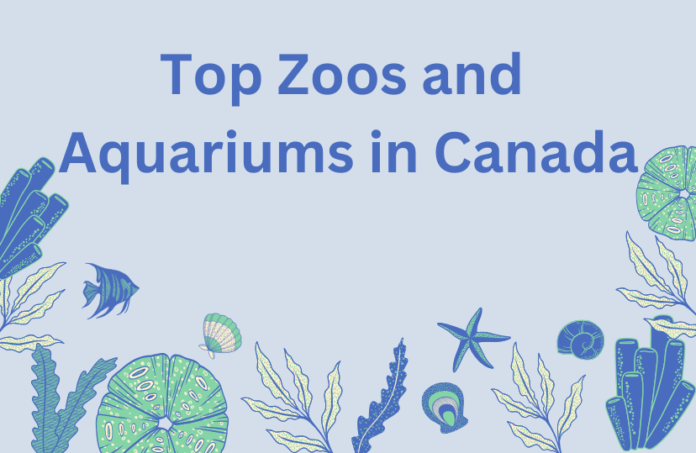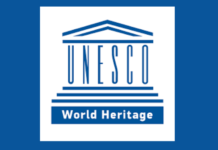Canada is home to some of the best zoos and aquariums in North America. These attractions blend wildlife conservation, education, and family-friendly experiences. Visitors can explore animals from all over the world, learn about marine life, and enjoy interactive exhibits that spark curiosity and respect for nature.
From the largest zoo in the country to immersive aquariums on the Pacific coast, Canada offers unforgettable encounters with wildlife. Here are some of the top zoos and aquariums worth visiting across the nation.
1. Toronto Zoo – Ontario
The Toronto Zoo is the largest zoo in Canada and one of the most popular wildlife attractions. It is divided into themed zones that represent different regions such as Africa, Asia, Australia, and the Americas.
Visitors can see more than 5,000 animals and learn about endangered species like snow leopards, orangutans, and rhinos. The zoo also offers wildlife talks, educational programs, and interactive family activities.
Famous exhibits include the Gorilla Rainforest, the Tundra Trek, and the award-winning Giant Panda Experience. With its strong focus on conservation, the Toronto Zoo is a must-visit for animal lovers.
2. Vancouver Aquarium – British Columbia
Situated in Stanley Park, the Vancouver Aquarium is one of North America’s most respected marine facilities. It is well-known for its conservation efforts and impressive collection of marine species.
Visitors can watch playful sea otters, glowing jellyfish, and thousands of fish from around the world. The Amazon Gallery features tropical birds, reptiles, and even sloths.
The aquarium also plays a major role in marine animal rescue on the West Coast, especially for seals and sea lions. Families and school groups enjoy its educational and interactive exhibits.
3. Calgary Zoo – Alberta
The Calgary Zoo is one of Canada’s leading wildlife destinations. It attracts visitors from around the world and is deeply committed to species conservation.
Popular exhibits include Destination Africa, Penguin Plunge, and the Canadian Wilds. The immersive Land of Lemurs provides a unique walk-through experience.
The zoo combines entertainment with scientific research and learning. With beautiful gardens and family-friendly zones, it offers an enjoyable day for all ages.
4. Ripley’s Aquarium of Canada – Toronto, Ontario
Ripley’s Aquarium of Canada is one of Toronto’s most visited attractions. Located next to the CN Tower, it houses a wide variety of marine species from across the globe.
The famed Dangerous Lagoon is an underwater tunnel where visitors glide beneath sharks, rays, and giant fish. Touch pools and interactive exhibits offer hands-on experiences.
The aquarium also hosts dive shows, educational programs, and special events like “Sleepovers with the Sharks.” Its modern and immersive design makes it a standout attraction.
5. Assiniboine Park Zoo – Winnipeg, Manitoba
Assiniboine Park Zoo is a major attraction in Winnipeg, best known for its Journey to Churchill exhibit. This area showcases polar bears, Arctic foxes, and seals in an authentic northern environment.
The zoo focuses heavily on conservation, especially for species affected by climate change. It also features tropical animals, African wildlife, reptiles, and birds.
Families enjoy the zoo’s layout, play zones, and educational programs. The polar bear viewing tunnel is one of the most iconic wildlife experiences in Canada.
6. Edmonton Valley Zoo – Alberta
The Edmonton Valley Zoo is a smaller, family-friendly attraction focused on animal care, conservation, and education. It is home to over 350 animals, including otters, red pandas, meerkats, and snow leopards.
The zoo’s intimate setting makes it ideal for families with young children. Visitors can enjoy feeding demonstrations, animal encounters, and behind-the-scenes tours.
Several exhibits highlight endangered species and global conservation issues. Ongoing upgrades continue to expand and modernize the zoo.
7. Montréal Biodôme – Quebec
The Montréal Biodôme offers a unique animal experience by recreating natural ecosystems under one roof. Instead of traditional exhibits, it provides immersive environments.
Visitors can walk through a rainforest, a sub-Arctic zone, and marine ecosystems like the Gulf of St. Lawrence. Each section includes animals and plants that naturally belong to those climates.
The Biodôme focuses on environmental education and sustainable living. Its immersive design appeals to both children and adults.
8. Greater Vancouver Zoo – British Columbia
Located in Aldergrove, the Greater Vancouver Zoo is home to over 140 species. It is set within a large natural area that provides spacious habitats for animals.
Visitors can see lions, giraffes, kangaroos, hippos, and a wide variety of birds and reptiles. The zoo also offers train rides, guided tours, and special events like night safaris.
It is actively involved in conservation efforts, including breeding endangered species. Families appreciate its peaceful, nature-filled environment.
9. Québec Aquarium – Quebec City
The Québec Aquarium features both indoor and outdoor exhibits, showcasing more than 10,000 marine animals. Visitors can see polar bears, seals, walruses, jellyfish, and colorful tropical fish.
The facility includes underwater tunnels, touch pools, and seasonal events such as light festivals. Outdoor exhibits offer incredible views of Arctic animals.
With a strong focus on marine education, the aquarium provides engaging presentations about Canada’s ocean ecosystems. Its mix of indoor and outdoor spaces creates a fun year-round experience.
Conclusion
Canada’s zoos and aquariums offer enriching and unforgettable experiences for visitors of all ages. Whether you’re watching playful sea otters, exploring Arctic tunnels, or walking through tropical habitats, these attractions bring the wonders of nature to life.
Each facility plays a key role in conservation, research, and education, helping protect wildlife for future generations. With so many world-class destinations, Canada remains a top place to discover and appreciate animal life and marine ecosystems.
Explore more places to travel and enjoy in Canada.










